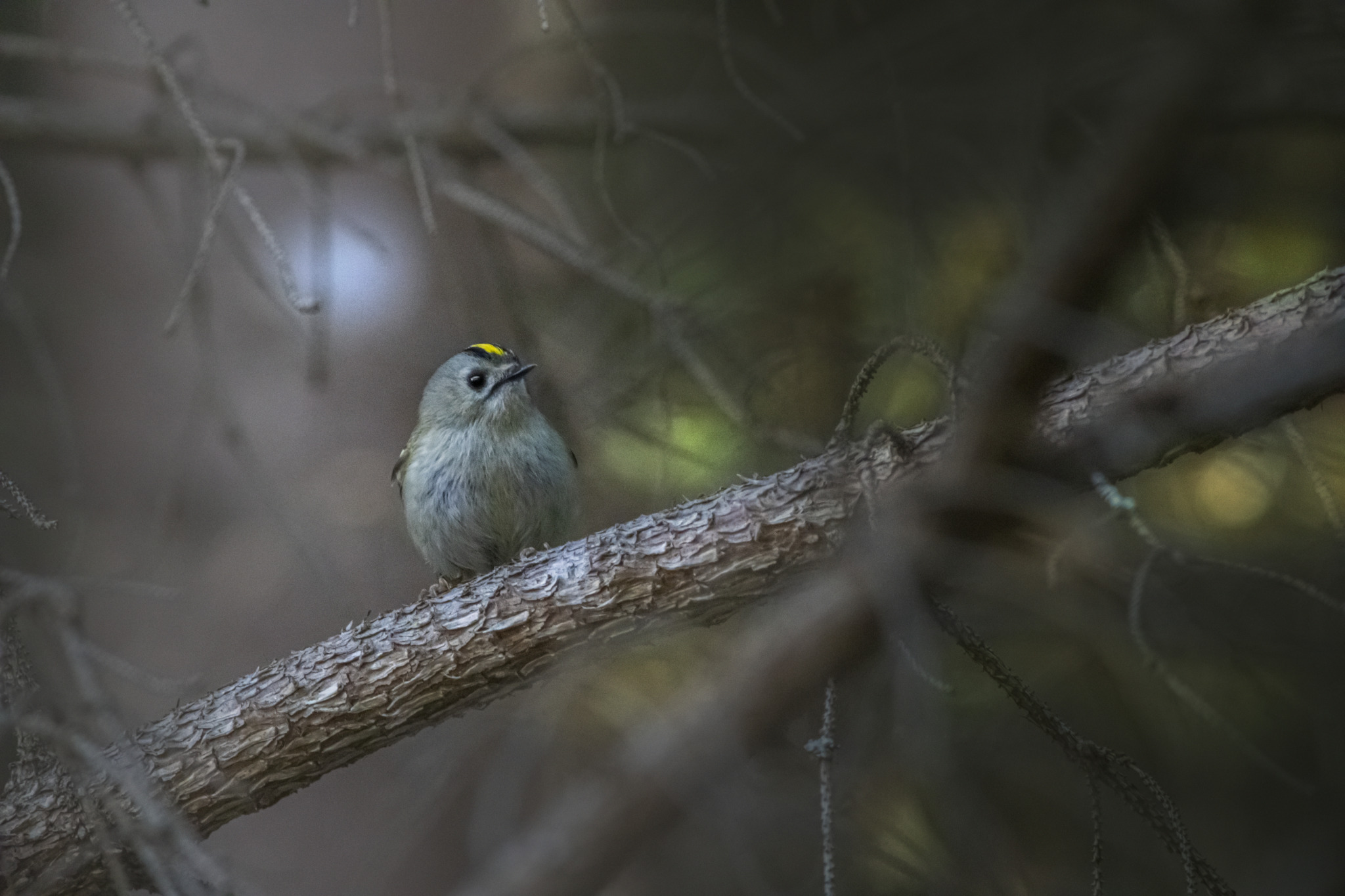The Goldcrest (Regulus regulus) is a small and charming bird belonging to the kinglet family, Regulidae. Here’s a detailed description:
Physical Characteristics: The Goldcrest is one of the smallest birds in Europe, measuring just 8 to 9 centimeters in length, with a wingspan of about 13 to 15 centimeters. It has a distinctive appearance, with olive-green upperparts, yellowish-green underparts, and a bright yellow crest on its head, which gives it its name. The crest can be raised or flattened depending on the bird’s mood or behavior. Its face is marked by a thin black eye-stripe, and its wings and tail are dark with paler edges. Both males and females have similar plumage, although males may have slightly brighter colors during the breeding season.
Habitat and Distribution: The Goldcrest is native to Europe, with a range that extends from the British Isles in the west to Siberia in the east. It is a resident bird in many parts of its range, although some populations may migrate short distances to warmer areas during the winter months. Goldcrests are typically found in coniferous and mixed woodlands, where they forage for insects and spiders among the branches and needles of trees. They also inhabit parks, gardens, and shrubby habitats.
Behavior and Diet: Goldcrests are highly active and agile birds, constantly flitting and darting through the branches in search of prey. They feed primarily on small insects, spiders, and other invertebrates, which they glean from foliage and bark using their slender bills. They may also hover briefly to catch flying insects or glean prey from the undersides of leaves. Despite their tiny size, Goldcrests are capable of covering vast distances during their foraging flights.
Reproduction: During the breeding season, which typically occurs from April to July, Goldcrests build small, cup-shaped nests made of moss, lichen, and spider silk, often suspended from the branches of conifer trees. The female lays a clutch of 6 to 12 eggs, which she incubates for about two weeks. Both parents participate in feeding and caring for the chicks, which fledge and become independent after another two weeks.
Conservation Status: The Goldcrest is not considered globally threatened and is classified as a species of least concern by the International Union for Conservation of Nature (IUCN). However, like many small songbirds, it may face threats such as habitat loss, predation, and harsh weather conditions. Conservation efforts focused on preserving and restoring woodland habitats are essential for ensuring the long-term survival of this delightful bird species.
Overall, the Goldcrest is a charming and endearing bird, valued for its tiny size, bright colors, and lively behavior. Its presence adds a touch of magic to woodlands and gardens across its range, delighting birdwatchers and nature enthusiasts with its acrobatic antics and cheerful songs.
Views: 449
Subscribe to the newsletter:
